Brooks Automation CFC Inductive Tag Reader User Manual CFC A5 E 1 1
Brooks Automation (Germany) GmbH RFID Division Inductive Tag Reader CFC A5 E 1 1
Users Manual
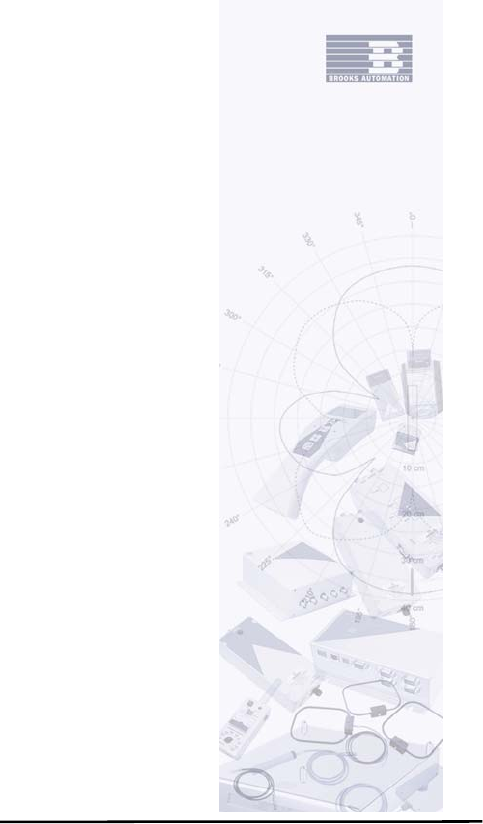
Compact Flash-Card
User Manual
Transponder Reader

2 Transponder Reader – CF-Card, Release 1.1
ID040052
Rev 11-2004
Printed in Germany
Subject to modifications
© 2004 BROOKS Automation (Germany) GmbH
RFID Division
Gartenstrasse 19
D-95490 Mistelgau
Germany
Tel: +49 9279 991 910
Fax: +49 9279 991 900
E-mail: rfid.support@brooks.com
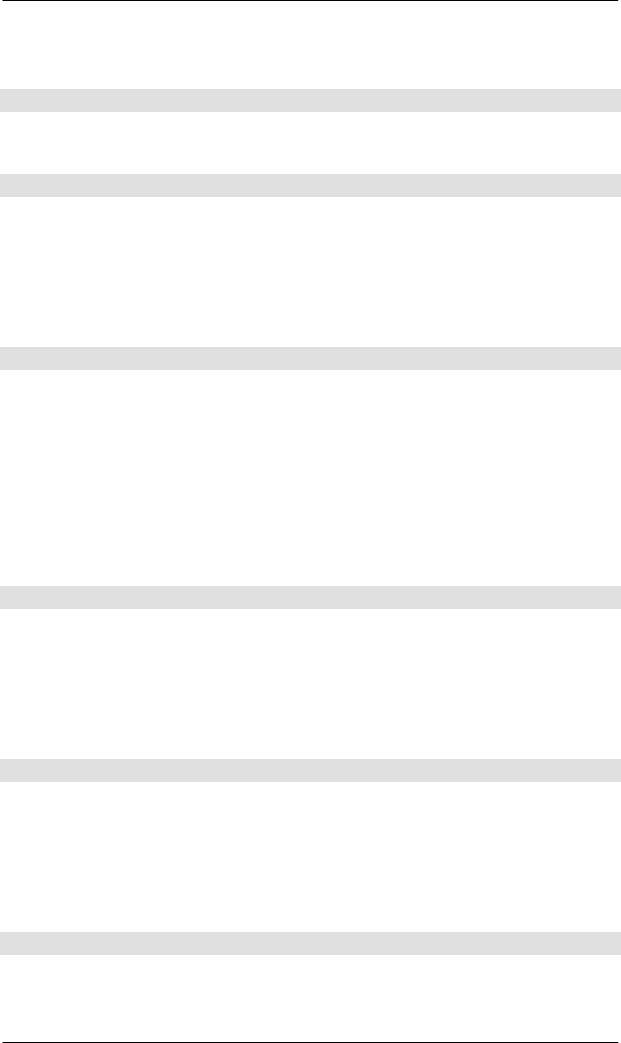
3
Transponder Reader – CF-Card, Release 1.1
TABLE OF CONTENTS
1 INTRODUCTION 5
1.1 About this Device ..................................................................5
1.2 About this Manual .................................................................6
2 SAFETY INSTRUCTIONS 7
2.1 Symbols and Types Used in this Manual ................................8
2.2 General Safety Instructions....................................................9
2.3 Proper Use.............................................................................9
2.4 Declaration of Conformity ...................................................10
2.4.1 USA – Federal Communications Commission (FCC) .....10
2.4.2 Europe – CE Conformity ...............................................11
3 PRODUCT DESCRIPTION 14
3.1 Hardware.............................................................................14
3.2 Labeling Information ...........................................................14
3.3 Technical Data.....................................................................14
3.3.1 Transponder Reader ......................................................14
3.3.2 Power Supply and Current Input....................................15
3.3.3 System Requirements ....................................................15
3.3.4 Serial Interface..............................................................15
3.4 Contents of Delivery............................................................16
3.5 Warranty and Liability.........................................................16
4 INSTALLATION 17
4.1 Installation Environment......................................................17
4.2 Dimensions..........................................................................18
4.3 Installation to a Notebook or PDA .......................................19
4.3.1 Notebook or Desktop PC ...............................................19
4.3.2 PDA..............................................................................19
4.4 Reading and Writing Ranges................................................22
5 OPERATION 23
5.1 Protocol...............................................................................23
5.1.1 Message Structure .........................................................23
5.1.2 Commands ....................................................................24
5.1.3 Error Messages..............................................................26
5.1.4 Acknowledge Codes......................................................26
5.2 Additional Instruction for Use..............................................26
6 SERVICE AND ERROR HANDLING 27
6.1 General................................................................................27
6.2 Reader can not be found by the PDA....................................27
6.3 Reader can not be found by the PC/Notebook.......................27

4 Transponder Reader – CF-Card, Release 1.1
6.4 Customer Service.................................................................28
7 TRANSPORTATION, DISPOSAL AND STORAGE 29
7.1 Transportation .....................................................................29
7.2 Disposal...............................................................................29
7.3 Storage ................................................................................29
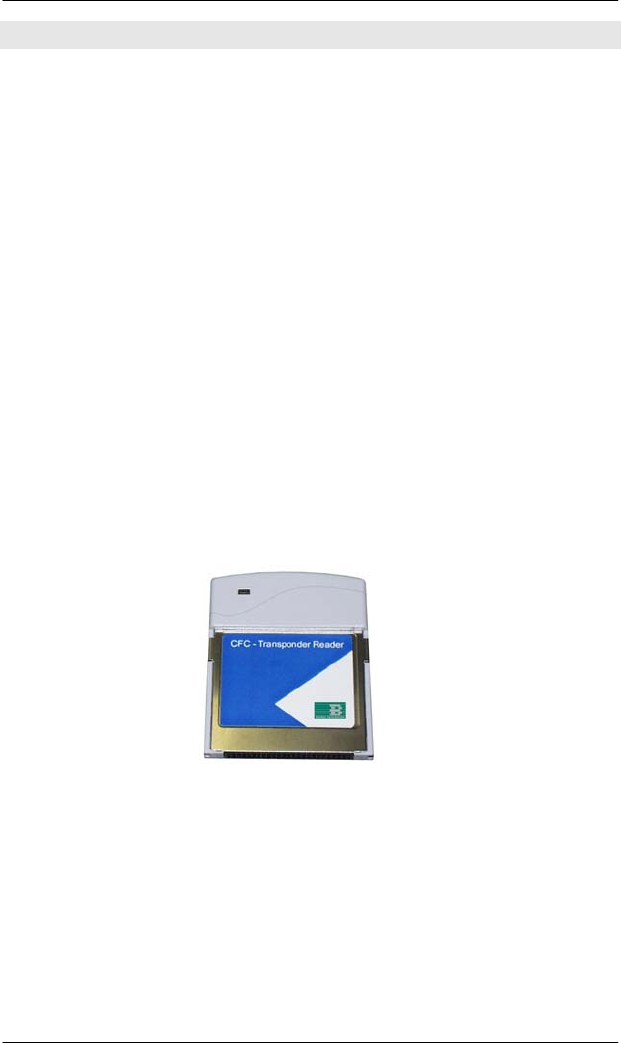
INTRODUCTION 1
5
Transponder Reader – CF-Card, Release 1.1
1 INTRODUCTION
1.1 About this Device
The BROOKS Transponder Reader System is a high-frequency
identification system that uses FM transmission.
The basic item is a transponder that works as a forgery-proof electronic
identity disk.
The reading unit of the system sends an energy impulse via the
antenna. The capacitor of the passive, battery-free transponder is
charged by this impulse. After that, the transponder returns a signal
with the stored data.
The total reading cycle takes less than 100 ms.
As a sight connection between the transponder and the reader is not
absolutely necessary, the transponder can also be identified through
non-metallic material.
The BROOKS CF-Card Transponder Reader is a device to read and
write to TIRIS transponder. The card can be used in connection with a
notebook or a PDA.

1 INTRODUCTION
6 Transponder Reader – CF-Card, Release 1.1
1.2 About this Manual
This manual contains information about installing, operating and error
handling the BROOKS CF-Card Transponder Reader. It consists of
seven chapters:
Introduction
Safety Instructions
Product Description
Installation
Operation
Service and Error Handling
Transportation, Disposal and Storage

SAFETY INSTRUCTIONS 2
7
Transponder Reader – CF-Card, Release 1.1
2 SAFETY INSTRUCTIONS
This product is manufactured in accordance with state of the art
technology and corresponds to recognized safety regulations.
Nevertheless, there are dangers associated with the use of the
equipment even for its intended purpose. You should therefore read the
following safety information carefully and keep it in mind.
Only install and operate this equipment if it is in perfect condition and
with reference to this manual. Do not use the equipment if it is
damaged.
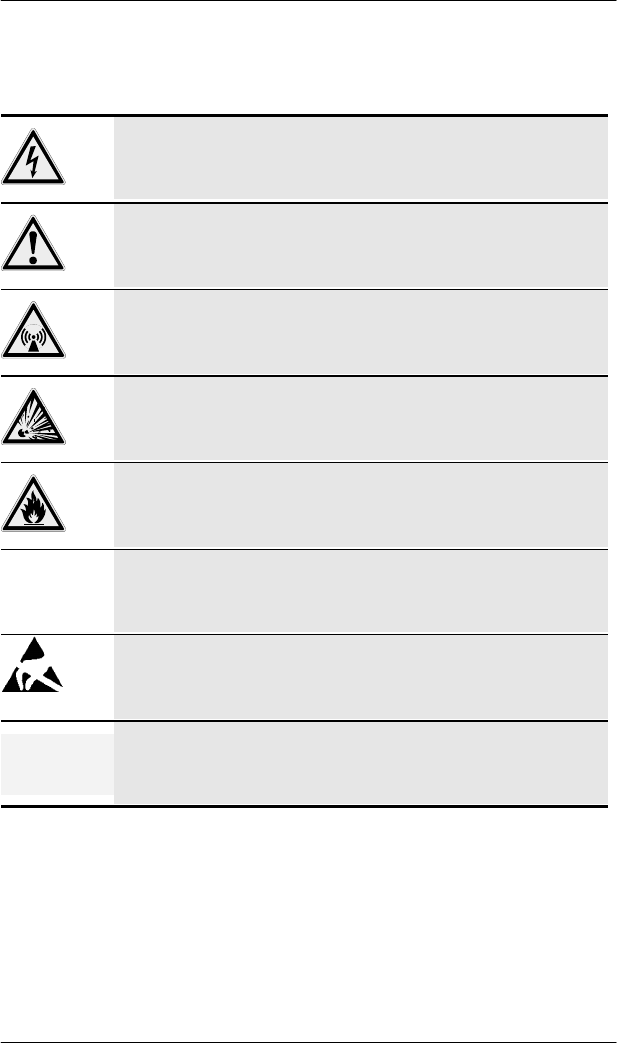
2 SAFETY INSTRUCTIONS
8 Transponder Reader – CF-Card, Release 1.1
2.1 Symbols and Types Used in this Manual
This symbol alerts you to dangerous voltage
This symbol alerts you to important instructions
This symbol indicates electromagnetic radiation
This symbol alerts you to risk of explosion
This symbol alerts you to risk of fire
This symbol indicates important additional
information
Electrostatically sensitive components
13:44:33
Incoming:
ENQ (05)
This type represents transmitted data display

SAFETY INSTRUCTIONS 2
9
Transponder Reader – CF-Card, Release 1.1
2.2 General Safety Instructions
1 Read and understand all safety and operating instructions
before installing and operating the device.
2 Keep these instructions. Store this manual in a place that can
be accessed at any time by all persons involved in installing,
operating and error handling the device.
3 Heed all warnings. Follow all warnings on the device and in
the operating instructions.
4 Install in accordance with the manufacturer's instructions
only.
5 Only use attachments, accessories and connecting cables
supplied by the manufacturer.
6 People with hearing aids should remember that radio signals
transmitted by the device might cause a very unpleasant
buzzing noise in their hearing aids.
7 When you disconnect a cable, pull on its conductor and not on
the cable itself. Keep the connector evenly aligned to avoid
bending any connector pins. When you connect a cable,
ensure that the connector pins are positioned correctly.
8 Never over bend the antenna cable or expose it to mechanical
loads.
9 When replacement parts are required, use the replacement
parts specified by the manufacturer only. Unauthorized
substitutions may result in fire, electric shock, or other
hazards.
2.3 Proper Use
This product was developed for reading and writing the TIRIS®
transponder only. Any other use of this device would constitute abuse
and would render the user’s authority to install and operate the device
invalid.
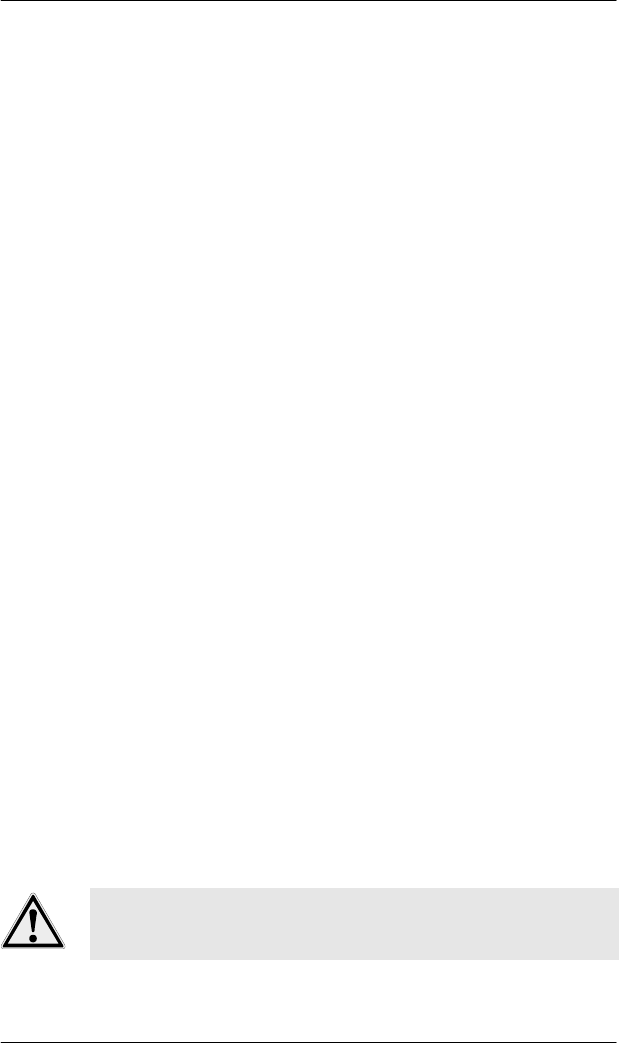
2 SAFETY INSTRUCTIONS
10 Transponder Reader – CF-Card, Release 1.1
2.4 Declaration of Conformity
2.4.1 USA – Federal Communications Commission (FCC)
This device complies with Part 15 of the FCC rules. Operation is
subject to the following two conditions:
1) This device may not cause harmful interference, and
2) This device must accept any interference received, including
interference that may cause undesired operation.
This equipment has been tested and found to comply with the
limits for a Class B digital device, in accordance with part 15 of
the FCC Rules. These limits are designed to provide reasonable
protection against harmful interference in a residential
installation.
This equipment generates, uses and can radiate radio frequency
energy and, if not installed and used in accordance with the
instructions, may cause harmful interference to radio
communications. However, there is no guarantee that
interference will not occur in a particular installation. If this
equipment does cause harmful interference to radio or
television reception – this can be determined by turning the
equipment off and on – the user is encouraged to try to correct
the interference using one or more of the following measures:
— Reposition or relocate the receiving antenna.
— Increase the distance between the equipment and the receiver.
— Connect the equipment to an outlet to a circuit other than the
one to which the receiver is connected.
— Consult the dealer or an experienced radio/TV technician for
assistance.
FCC ID: N5GCFC
Compliance with:
FCC Code of Federal Regulations, Part 15 Subpart C, Section §15.205
FCC Code of Federal Regulations, Part 15 Subpart C, Section §15.209
Any changes or modifications not expressly approved by the
party responsible for compliance could void the user’s
authority to operate the equipment.
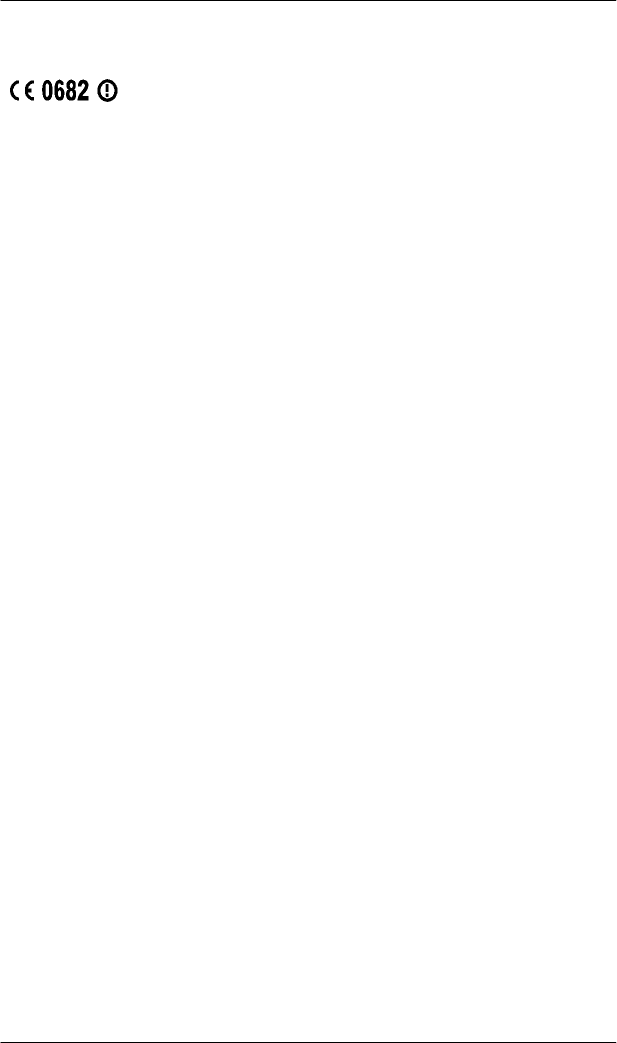
SAFETY INSTRUCTIONS 2
11
Transponder Reader – CF-Card, Release 1.1
2.4.2 Europe – CE Conformity
Konformitätserklärung gemäß dem Gesetz über Funkanlagen und
Telekommunikationsendeinrichtungen (FTEG) und der Richtlinie
1999/5/EG (R&TTE)
Declaration of Conformity in accordance with the Radio and
Telecommunications Terminal Equipment Act (FTEG) and Directive
1999/5/FC (R&TTE Directive)
Hersteller / Verantwortliche Person
Manufacturer / responsible person
BROOKS Automation
(Germany) GmbH /
Herr Dittrich
erklärt, dass das Produkt
declares that the product
CFC-Reader
Type (ggf. Anlagenkonfiguration mit
Angabe der Module):
Type (if applicable, configuration
including the modules)
5 Telekommunikations(Tk-)end-
einrichtung
Telecommunications terminal
equipment
Funkanlage
Radio equipment
Verwendungszweck
lntended purpose
Identification system
Geräteklasse / Equipment class 2
bei bestimmungsgemäßer Verwendung den grundlegenden
Anforderungen des § 3 und den übrigen einschlägigen
Bestimmungen des FTEG (Artikel 3 der R&TTE) entspricht.
complies with the essential requirements of §3 and the other relevant
provisions of the FTEG
(Article 3 of the R&TTE Directive), when used for its intended
purpose.

2 SAFETY INSTRUCTIONS
12 Transponder Reader – CF-Card, Release 1.1
Gesundheit und Sicherheit gemäß § 3 (1) 1. (Artikel 3 (1) a))
Health and safety requirements pursuant to
§ 3 (1) 1. (Article 3(1) a))
angewendete harmonisierte Normen
Harmonized standards applied
EN 60950
Einhaltung der grundlegenden
Anforderungen auf andere Art und
Weise (hierzu verwendete Standards/
Spezifikationen)
Other means of proving conformity
with the essential requirements
(standards/specifications used)
BMPT Decree No. 306/97
Schutzanforderungen in Bezug auf die elektromagnetische
Verträglichkeit (§ 3 (1) 2, Artikel 3 (1) b)
Protection requirements concerning electromagnetic compatibility §
3(1)(2), (Article 3(1)(b))
angewendete harmonisierte Normen
Harmonized standards applied
EN 301 489-3 (07/2000)
Einhaltung der grundlegenden
Anforderungen auf andere Art und
Weise (hierzu verwendete Standards /
Spezifikationen)
Other means of proving conformity
with the essential requirements
(standards/specifications used)
Maßnahmen zur effizienten Nutzung des
Funkfrequenzspektrums
Measures for the efficient use of the radio frequency spectrum
Luftschnittstelle bei Funkanlagen gemäß § 3(2) (Artikel 3(2))
Air interface of the radio systems pursuant to § 3(2) (Article 3(2))
Angewendete harmonisierte Normen
Harmonized standards applied

SAFETY INSTRUCTIONS 2
13
Transponder Reader – CF-Card, Release 1.1
Einhaltung der grundlegenden
Anforderungen auf andere Art und
Weise (hierzu verwendete Standards /
Schnittstellenbeschreibungen)
Other means of proving conformity
with the essential requirements
(standards/interface specifications
used)
EN 300 330-1 (06/2001)
BROOKS Automation (Germany)
GmbH
Gartenstr. 19
D-95490 Mistelgau
Germany
Phone +49 9279 991 910
Fax +49 9279 991 900
Mistelgau, 20.09.2004
Gerald Dittrich
(Place and date of issue) (Name and signature)
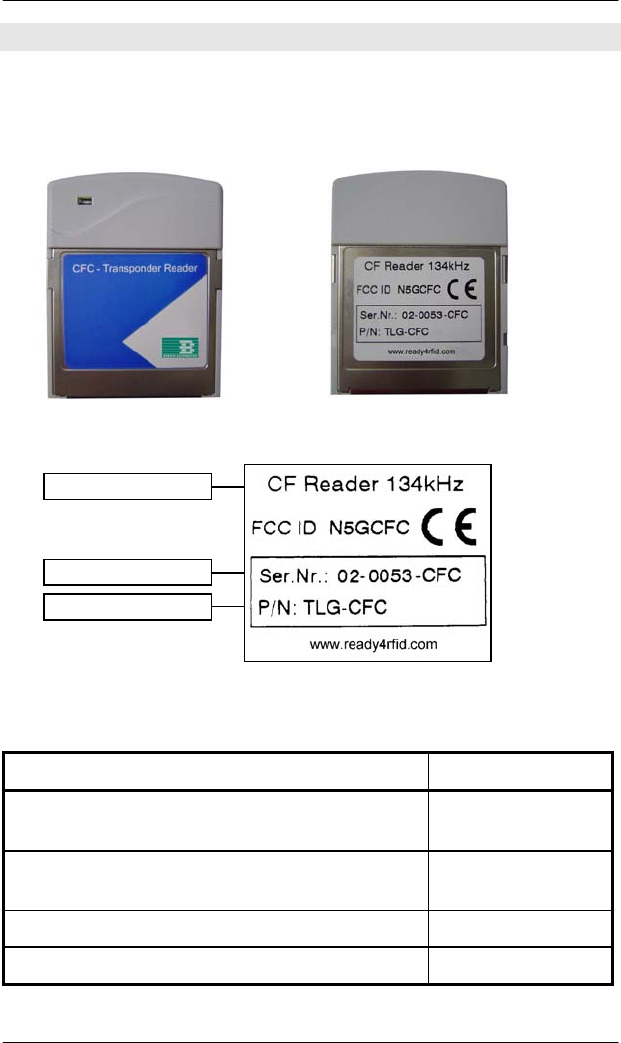
3 PRODUCT DESCRIPTION
14 Transponder Reader – CF-Card, Release 1.1
3 PRODUCT DESCRIPTION
3.1 Hardware
Standard device: TLG-CFC-S-R
3.2 Labeling Information
3.3 Technical Data
3.3.1 Transponder Reader
Parameter Value
Operation temperature 0°C to +50°C
32°F to 122°F
Stock temperature -25°C to +70°C
-13°F to +158°F
Permissible humidity @ 50C° 25 - 80 %
Transmitter frequency 134.2 kHz
Serial number
Type
Part number
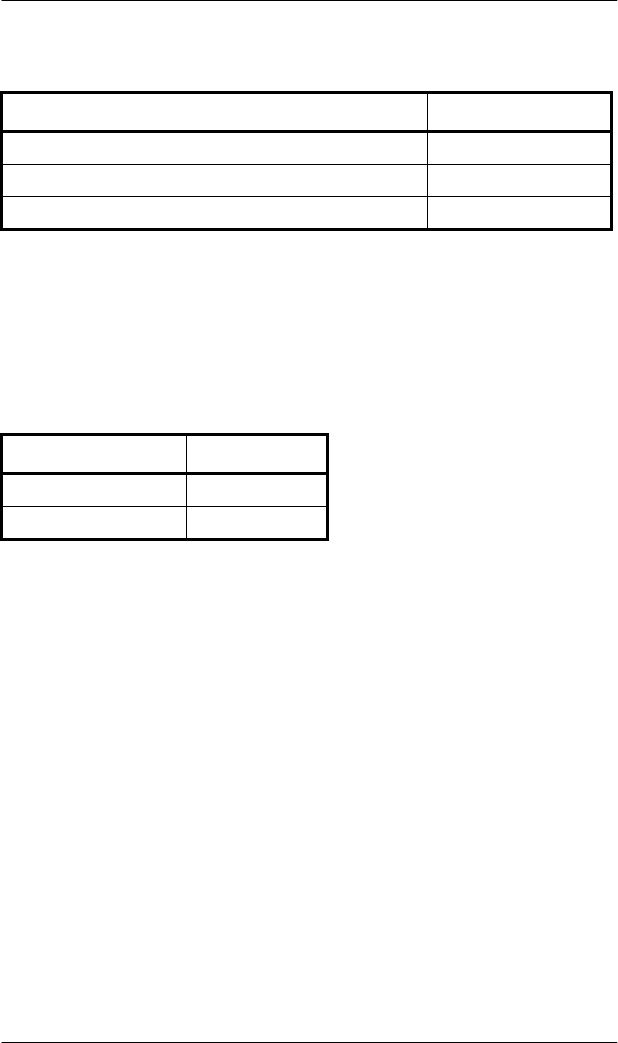
PRODUCT DESCRIPTION 3
15
Transponder Reader – CF-Card, Release 1.1
3.3.2 Power Supply and Current Input
Description Value
Voltage 3,5/5 VDC(+/- 5%)
Current (reading and writing) 100 mA
Current (passive) 50 mA
3.3.3 System Requirements
Slot Type: CF-Card Type I
Operating System: Win9x/2000/NT/XP/CE
3.3.4 Serial Interface
Description Value
Baud rate 19200
parity none

3 PRODUCT DESCRIPTION
16 Transponder Reader – CF-Card, Release 1.1
3.4 Contents of Delivery
Number Description
1 Transponder Reader CFC-Card
1 Device driver, test software (CD-ROM)
1 Instruction manual
3.5 Warranty and Liability
The warranty period is 24 months and begins with the moment of
delivery of the device as proved by an invoice or other documents.
The warranty includes the repair of all damages to the device that
occur within the warranty period, and which are evidently caused by
faults of the material or production defects.
The warranty does not include damages caused by incorrect
connection, inappropriate handling and non-observance of the
technical reports.
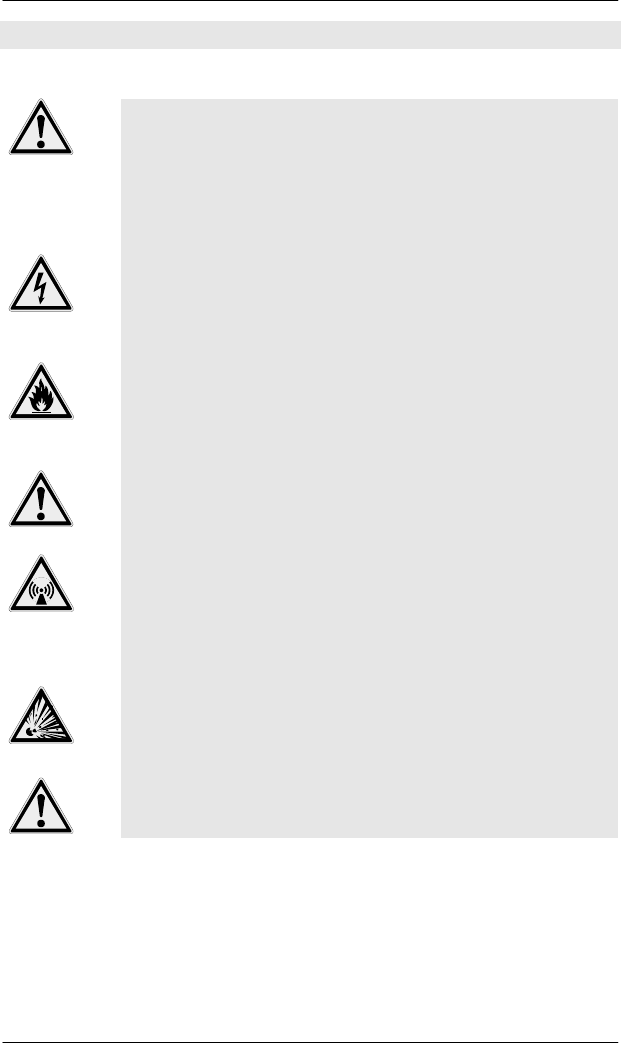
INSTALLATION 4
17
Transponder Reader – CF-Card, Release 1.1
4 INSTALLATION
4.1 Installation Environment
This device is designed for use in an indoor
environment only. Installation is only permitted in
an environmental indoor climate with a constant
temperature of between 0°C and +50°C / 32°F and
122°F, humidity between 25% and 80%, and a
maximum temperature of +50°C / 122°F.
Do not install or use this device in or near water.
Never spill liquids of any kind onto the device.
Should spillage occur, unplug the device and have
it checked by a technician.
Do not install near heat sources such as radiators,
heat registers, stoves, or other apparatus (including
amplifiers) that produce heat. Do not install the
device in a flammable environment.
Never expose the device to intense changes in
temperature, otherwise condensation can develop
inside the device and cause damages.
The device should not be used in the immediate
vicinity of electrical units (such as medical units,
monitors, telephones, televisions and energy-saver
lamps), magnetic data carriers, or metallic objects.
This could result in reduced reading/writing ranges.
Never use the device in potentially explosive areas
(such as paint shops).
Do not position the device in a location where it
can suffer from vibration or shock.
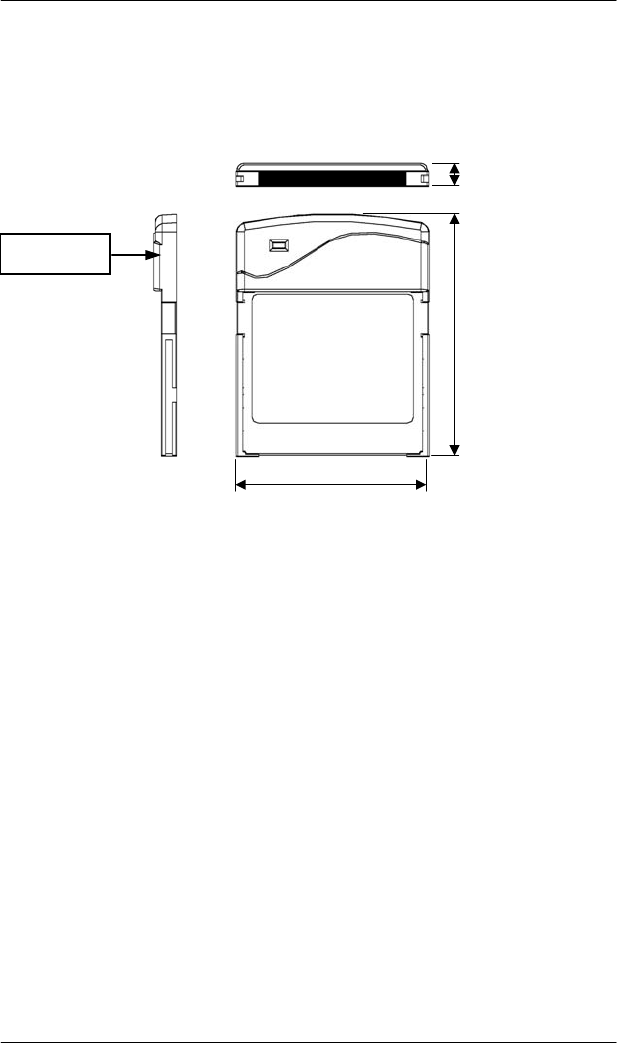
4 INSTALLATION
18 Transponder Reader – CF-Card, Release 1.1
4.2 Dimensions
Standard device TLG-CFC-S-R:
5.00 mm
53.76 mm
42.80 mm
Antenna

INSTALLATION 4
19
Transponder Reader – CF-Card, Release 1.1
4.3 Installation to a Notebook or PDA
The CF-Card Transponder Reader is suitable for all Windows
operating systems.
The interface of the reader is comparable with the interface of a serial
interface card.
4.3.1 Notebook or Desktop PC
On operating systems which support plug & play, the card will be
detected automatically. Then only the delivered *.inf file must be
installed. If the card was installed successfully a new entry “com x”
appears in the device manager (for example “com 3”).
On operating systems which don’t support plug & play, the card must
be installed manually. After plug in the card and starting the system,
the serial interface must be configured manually. For more information
see the Windows help of the device manager.
4.3.2 PDA
On a PDA there is no installation of the CF-Card Reader necessary.
The card supports plug & play for an easy use. If the card was plugged
into the PDA a new COM port will be established automatically (for
example “com 3”). Via this COM port, the system can communicate to
the card via the serial protocol of the card.
To test the card, the BROOKS test tool must be installed on the PDA.
To install the test tool, start the setup.exe on the delivered CD-ROM
and follow the instructions on the screen.
System requirements for the installation of the test tool:
ARM processor
Operating system: PocketPC 2002
A version of Microsoft ActiveSync must be installed on the host.
The PDA must be connected to the host and a connection must be
established.
The test tool is also available on request for other processor
types and OS systems.

4 INSTALLATION
20 Transponder Reader – CF-Card, Release 1.1
4.3.2.1 BROOKS CF-Card Reader Test Software for PDA
The test software can be used to read and write to a TIRIS transponder.
After starting the software, the tool is searching for the BROOKS CF-
Card Reader.
Was the CF-Card Reader detected successfully, the message “- PCCard
found –“ appears in the status line.
Pushing the button ‘SCAN’, starts the reading of the transponder. The
transponder data can be displayed in ASCII mode or in HEX mode.
(see picture 4.1 and picture 4.2)
A click on a certain page opens the dialog to change the content of the
page. The content of the selected page can be changed in ASCII mode
or in HEX mode. (see picture 4.3 and picture 4.4)
picture 4.1:Scan – ASCII mode picture 4.2: Scan – HEX mode
status line
picture 4.3: Write – ASCII mode
editor mode
selected page lock the page
a
pp
l
y
the chan
g
es
cancel the
changes
in
p
ut box
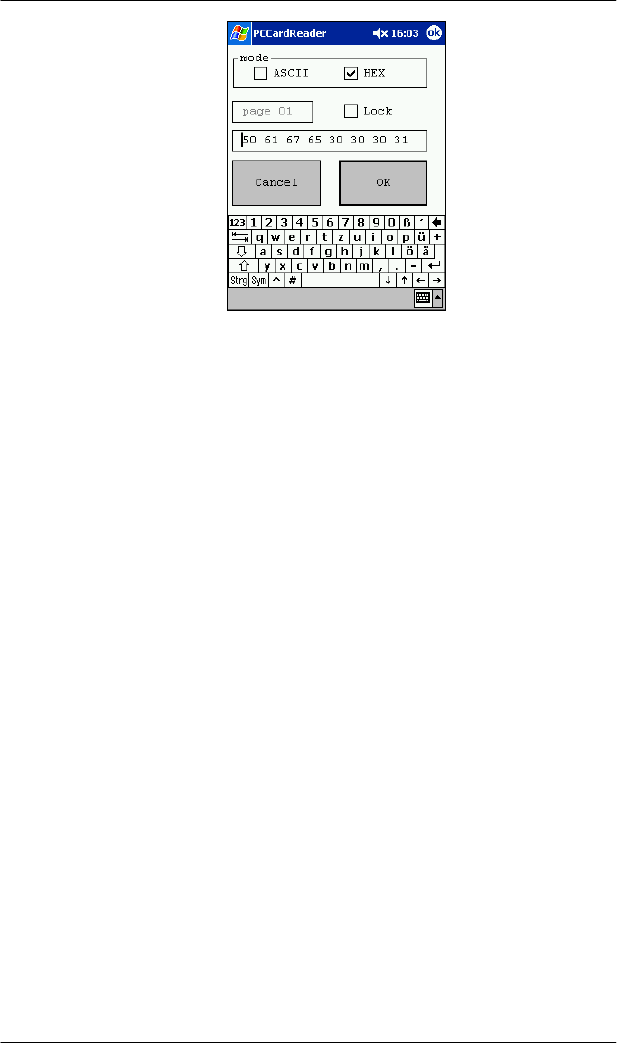
INSTALLATION 4
21
Transponder Reader – CF-Card, Release 1.1
picture 4.4: Write – HEX mode
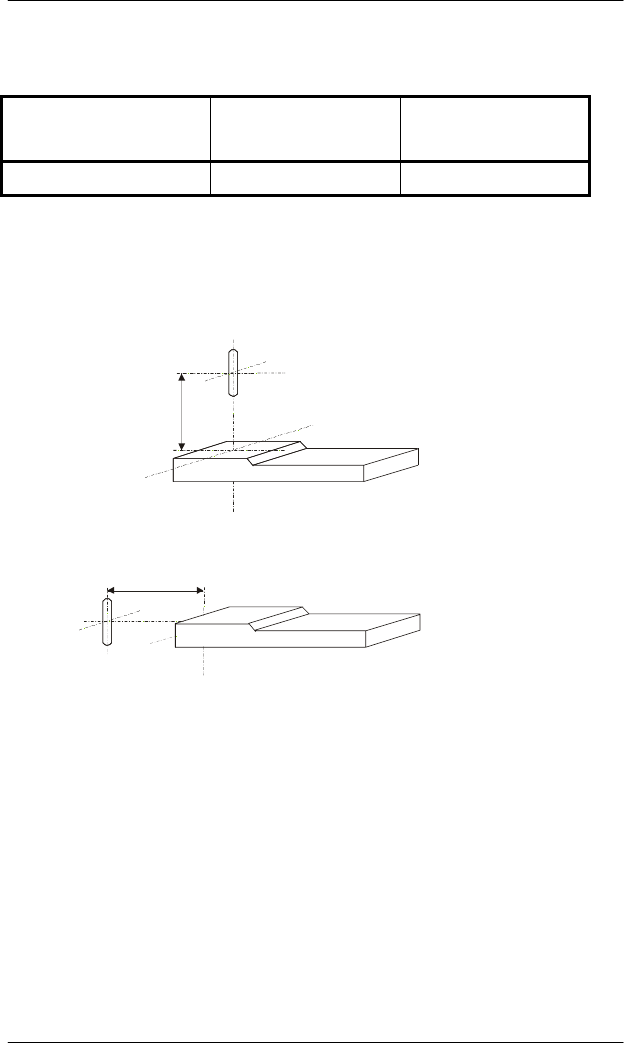
4 INSTALLATION
22 Transponder Reader – CF-Card, Release 1.1
4.4 Reading and Writing Ranges
Type Reading range
[mm]
Writing range
[mm]
TLG-CFC-S-R 55 35
Optimal reading and writing positions:
TLG-CFC-S-R
The real reading and writing range depends on the type of PDA.
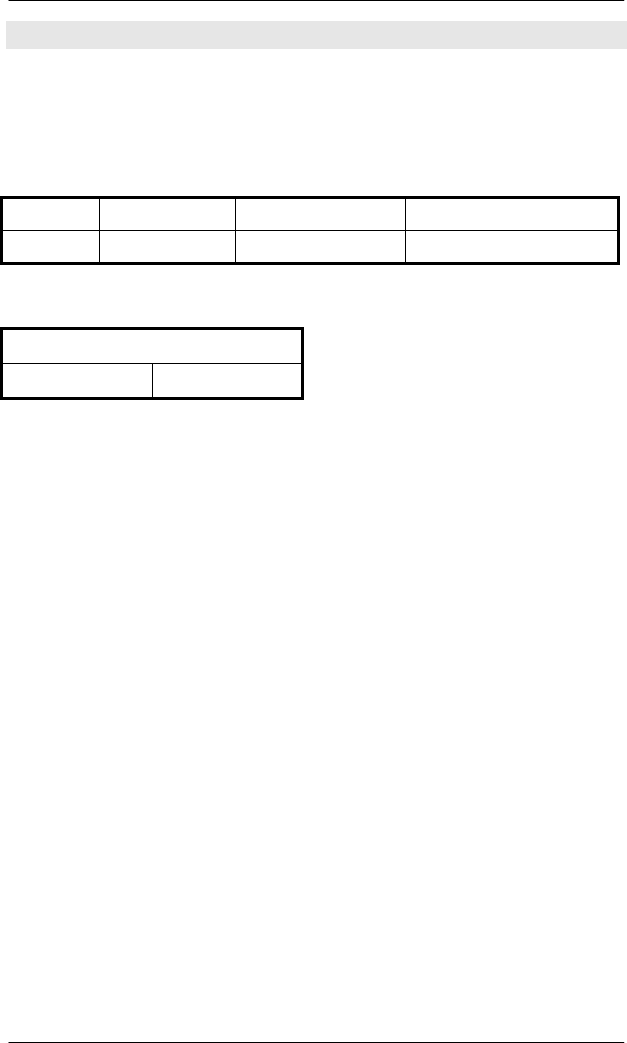
OPERATION 5
23
Transponder Reader – CF-Card, Release 1.1
5 OPERATION
5.1 Protocol
5.1.1 Message Structure
All messages have the following structure:
Length Header Data Checksum
1 byte 2 bytes 1 or more bytes 2 bytes
Header
Command Action #
Length: Number of bytes of Header and Data
(without Length and Checksum).
Header: Consists of Command and Action #
Command: Defines the function of the message.
Action #: To distinguish the single messages the Action # will
be increased for each new message.
Data: The content depends of the message type.
Checksum: 2 bytes checksum over Length, Header and Data
(sum of byte values).
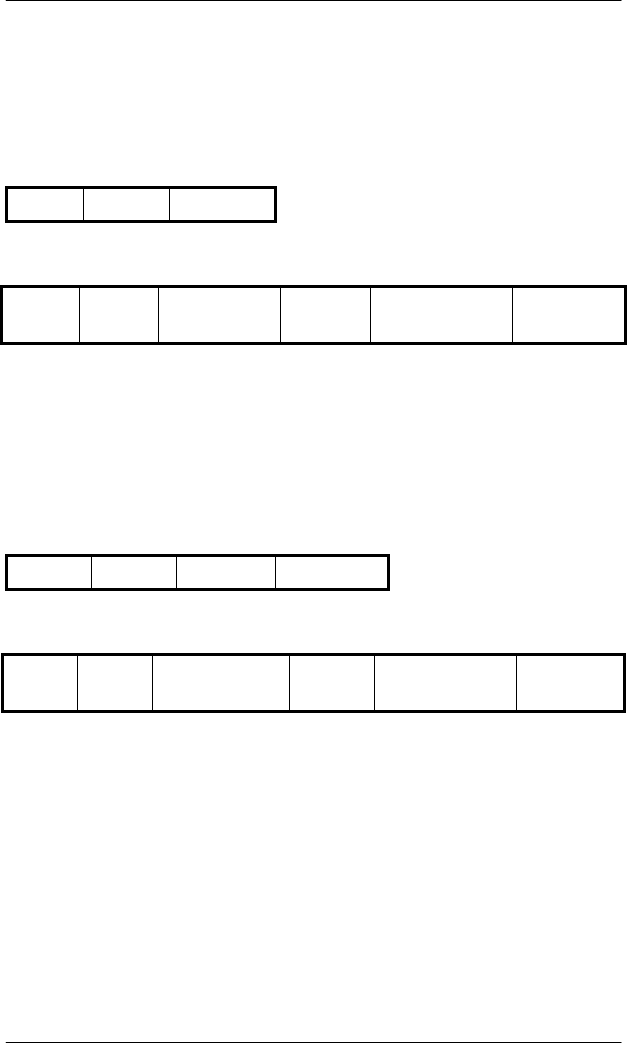
5 OPERATION
24 Transponder Reader – CF-Card, Release 1.1
5.1.2 Commands
Reading of ‘Read Only’ or ‘Read/Write’ transponder
Command: 01H
Message:
Length Header Checksum
Response:
Length Header Type of
Transponder Page # Data (8 bytes) Checksum
Reading of Multipage Transponder
The first data byte contains the page of the multipage transponder
which shall be read.
Command: 02H
Message:
Length Header Page # Checksum
Response:
Length Header Type of
Transponder Page # Data (8 bytes) Checksum
Types of Transponder
This item is used in command ‘01H’ and ‘02H’.
0x00 NONE
0x01 READ_ONLY
0x02 READ_WRITE
0x03 MULTI_PAGE_Read_unlocked
0x04 MULTI_PAGE_Programming
0x05 MULTI_PAGE_Read_locked
0x06 READ_WRITE_Programming
0x07 RW_FAIL
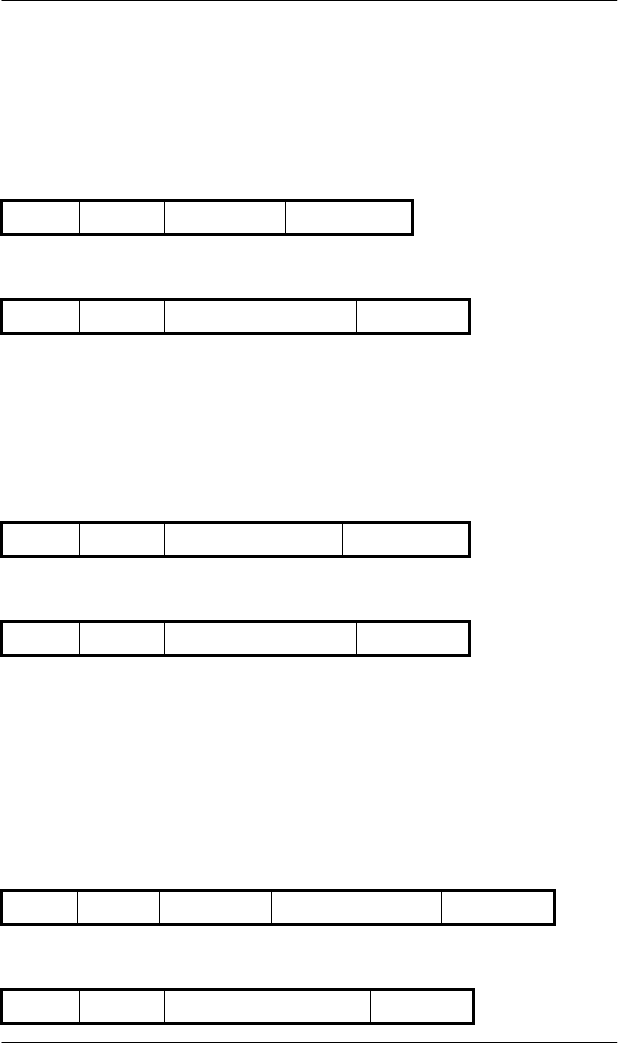
OPERATION 5
25
Transponder Reader – CF-Card, Release 1.1
Locking a Page
The first data byte contains the page of the multipage transponder
which shall be locked.
Command: 05H
Message:
Length Header Page # Checksum
Response:
Length Header Acknowledge Code Checksum
Writing to a ‘Read/Write’ Transponder
The data bytes 1-8 contain the transponder data for writing.
Command: 08H
Message:
Length Header Data (8 bytes) Checksum
Response:
Length Header Acknowledge Code Checksum
Writing to a Multipage Transponder
The first data byte contains the page of the multipage transponder to
which shall be written. Byte 2 up to byte 9 contain the page data of the
page specified in byte 1.
Command: 09H
Message:
Length Header Page # Data (8 bytes) Checksum
Response:
Length Header Acknowledge Code Checksum
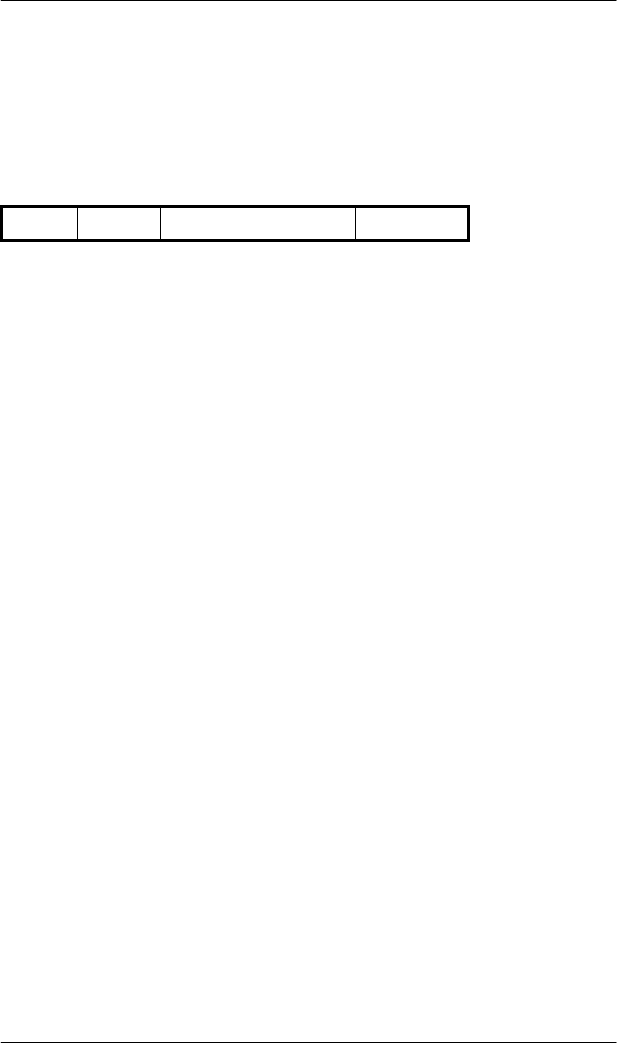
5 OPERATION
26 Transponder Reader – CF-Card, Release 1.1
5.1.3 Error Messages
On any error the CF-Card Reader responses an error message.
The header of the error message is the same like the header of the
message which has caused the error.
Message:
Length Header Acknowledge Code Checksum
5.1.4 Acknowledge Codes
0x00 Acknowledge OK
0x01 read failed
0x02 write failed
0x03 lock failed
0x04 wrong checksum
0x05 wrong command
0x06 wrong page on read MP
5.2 Additional Instruction for Use
Never expose the device to a intense change in temperature. Otherwise,
water of condensation can develop inside the device what can lead to
damages.
Never bend or extend the antenna cable or expose it to other
mechanical loads.

SERVICE AND ERROR HANDLING 6
27
Transponder Reader – CF-Card, Release 1.1
6 SERVICE AND ERROR HANDLING
6.1 General
The transponder reader and its components must be serviced by
the manufacturer only.
If errors occur, follow the instructions in this section. Do not
carry out any error eliminating measures other than the ones
described in this section.
If you are uncertain about errors and their handling, contact
the manufacturer (see the contact information on page 28 of this
manual). Have the serial number of the transponder reader
ready as shown on the label (see page 14) when contacting the
manufacturer.
6.2 Reader can not be found by the PDA
1 Check the correct position of the card in the CF slot.
2 Remove the card an plug it in again.
3 Check the battery status of the expansion pack.
If these measures do not solve the problem, contact the manufacturer.
6.3 Reader can not be found by the PC/Notebook
1 Check the correct position of the card in the PCMCIA adapter.
2 Check whether the card is installed as COM port in the system
settings of your PC.
3 Install the delivered *.inf file again.
If these measures do not solve the problem, contact the manufacturer.

6 SERVICE AND ERROR HANDLING
28 Transponder Reader – CF-Card, Release 1.1
6.4 Customer Service
BROOKS Automation (Germany) GmbH
RFID Division
Gartenstraße 19
D-95490 Mistelgau
Germany
Tel: +49 9279 991 910
Fax: +49 9279 991 900
E-mail: rfid.support@brooks.com
24 hour technical support hotline (Brooks): +1 978 262 2900

TRANSPORTATION, DISPOSAL AND STORAGE 7
29
Transponder Reader – CF-Card, Release 1.1
7 TRANSPORTATION, DISPOSAL AND STORAGE
7.1 Transportation
For transportation purposes such as mailing, use a firm cardboard box.
Use adequate padding material to protect the device on all sides.
7.2 Disposal
Do not throw the reader away with everyday household trash.
Dispose of the electronic components, antennas and cables as
electronic trash.
7.3 Storage
Store the reader and its components in a clean and dry environment.
Make sure the contacts remain clean. Observe the necessary storage
conditions (for technical data, see page 14).

7 TRANSPORTATION, DISPOSAL AND STORAGE
30 Transponder Reader – CF-Card, Release 1.1
Version Änderungen Datum Autor
1.0 Dokument aus Beschreibung für PCC-Reader
erstellt 08.10.04 AM
1.1 FCC Part eingefügt (Seite 10) 16.11.04 AM